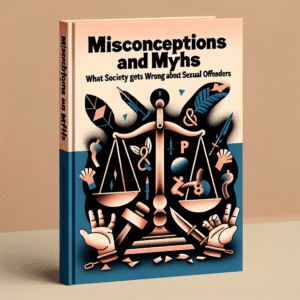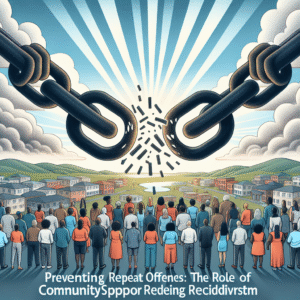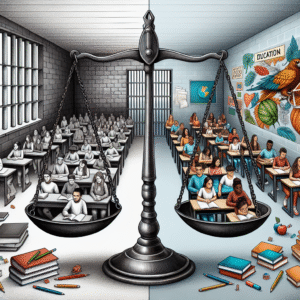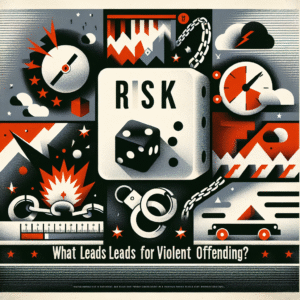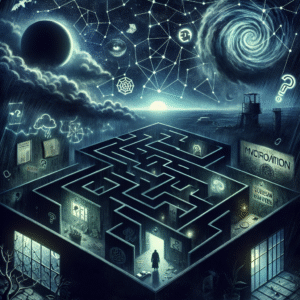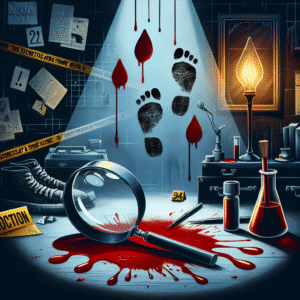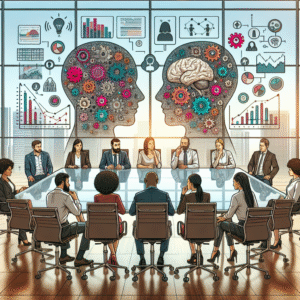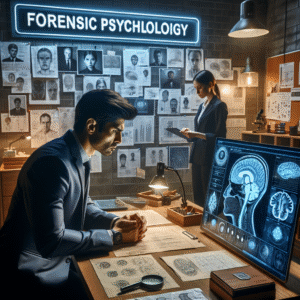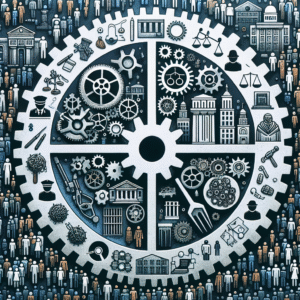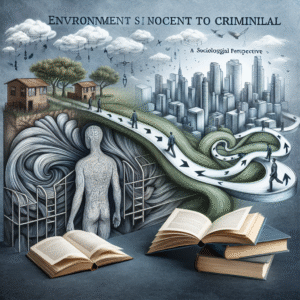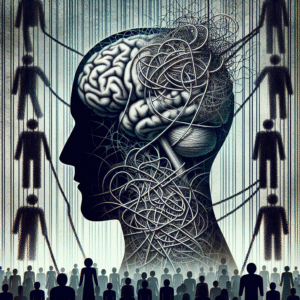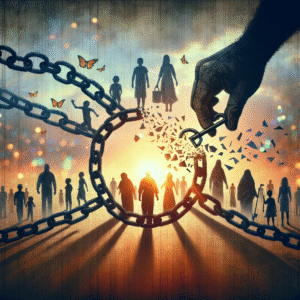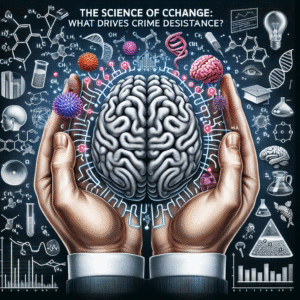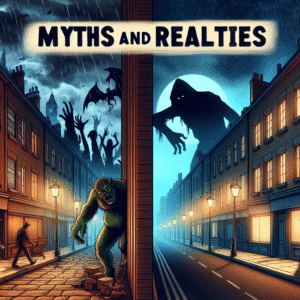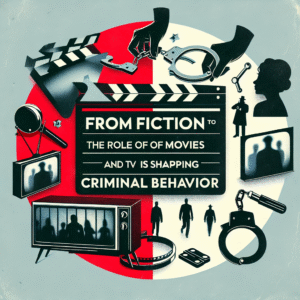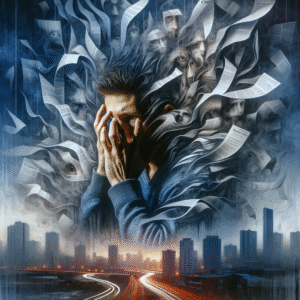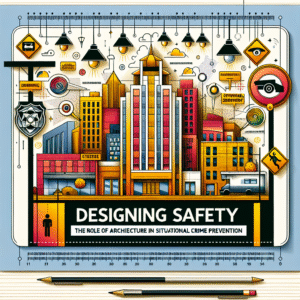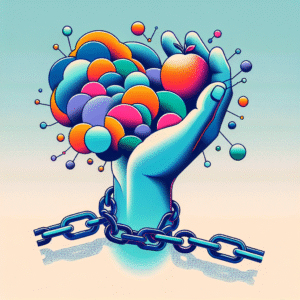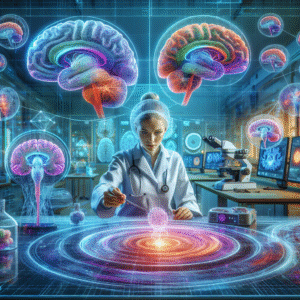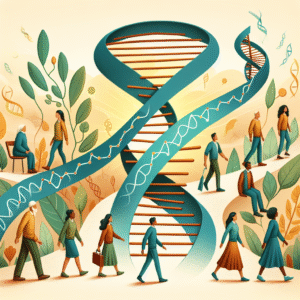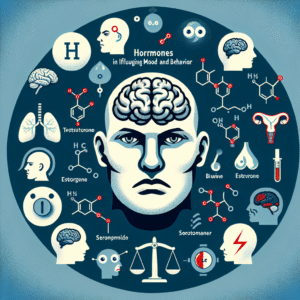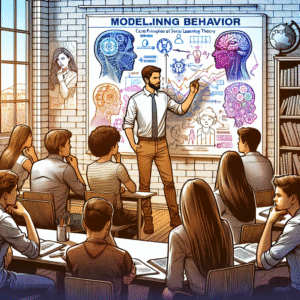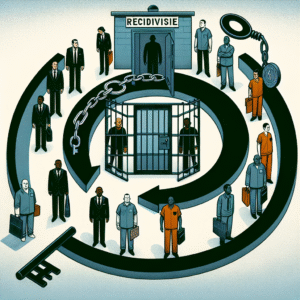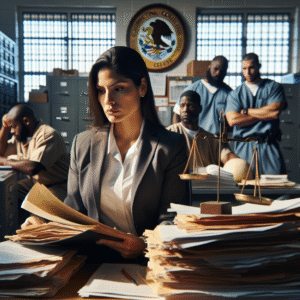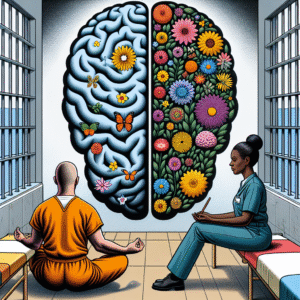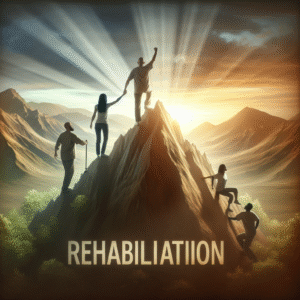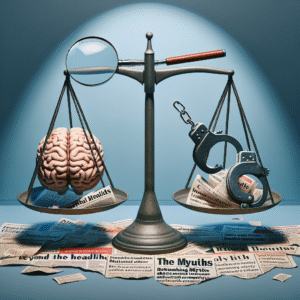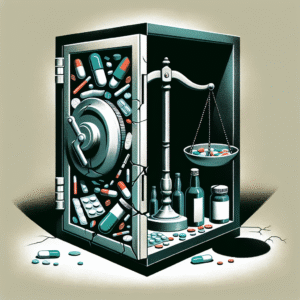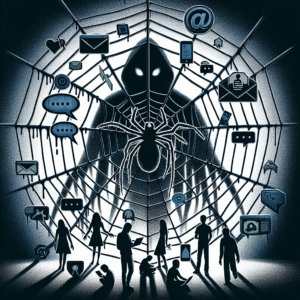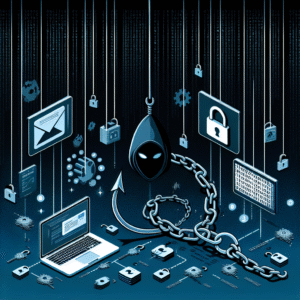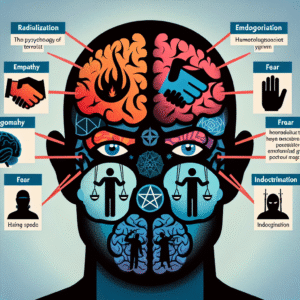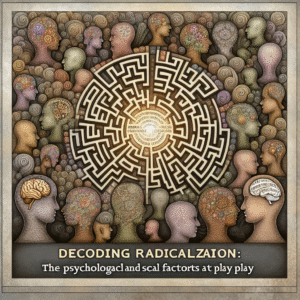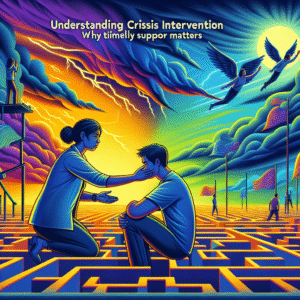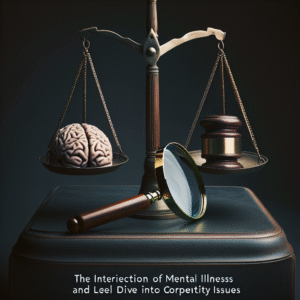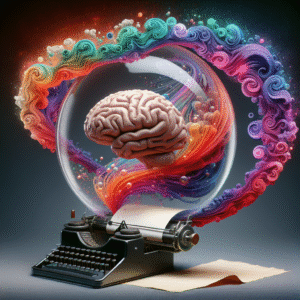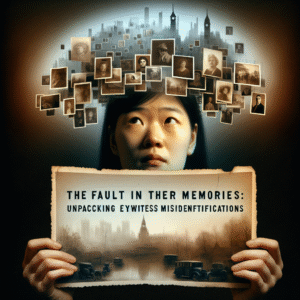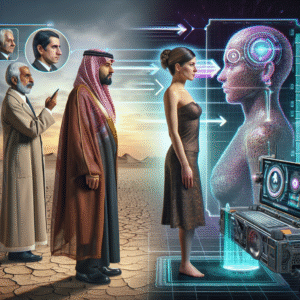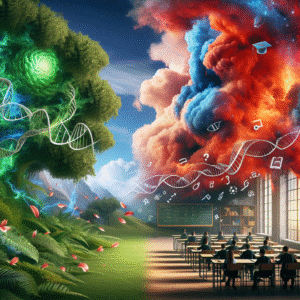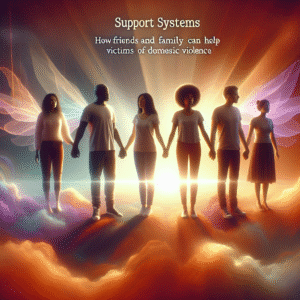Introduction In a world where information spreads faster than ever, misconceptions and myths about sexual offenders persist, clouding our understanding and impacting our society. It’s essential to unpack these misconceptions and myths: what society gets wrong about sexual offenders? Understanding this topic not only fosters empathy but also encourages informed discussions that can lead to more effective preventive measures....
Life Course Criminality
Introduction In today’s interconnected world, technology offers remarkable opportunities for communication, commerce, and creativity. Yet, it also paves the way for a new breed of crime: cybercrime. As we navigate this digital landscape, we must engage with the complexities of victimization in the online realm. This article aims to unpack the essence of Victimology in the Digital Age: Navigating...
Introduction In today’s rapidly evolving business landscape, risk assessment has become a cornerstone of effective management strategies. Organizations face an array of threats—from cyberattacks to regulatory compliance issues—that can hinder their growth and reputation. This is where the importance of risk assessment tools comes into play. By effectively identifying, evaluating, and mitigating risks, organizations can not only safeguard their...
Introduction As society grapples with the complexities of crime and rehabilitation, the urgency to address repeat offenses becomes increasingly pivotal. The cycle of recidivism affects not only the individual but also families, communities, and the broader social fabric. Understanding Preventing Repeat Offenses: The Role of Community Support in Reducing Recidivism is essential for fostering a more robust, supportive ecosystem...
Introduction In our rapidly changing society, the conversation surrounding youth offenders often leans heavily on the dichotomy between education and incarceration. It’s a pressing issue that impacts not only the young individuals involved but also the fabric of our communities. How can school programs serve as a more effective tool for rehabilitation than the juvenile justice system? Let’s explore...
Introduction Violence, a complex and multifaceted phenomenon, continues to pose significant challenges across societies. Understanding risk factors for violence: what leads to violent offending? is essential not only for scholars and policymakers but also for communities and individuals seeking to mitigate harm. By grasping these critical elements, we can devise better strategies for prevention, intervention, and rehabilitation. This article...
Introduction It’s a chilling reality that some individuals can commit heinous acts of violence. As society grapples with these tragedies, the question arises: what drives someone to kill? Understanding the intricacies of human behavior is crucial—especially in dissecting The Role of Environment in Shaping a Killer’s Motivation. Various factors, from upbringing to social dynamics, contribute significantly to a person’s...
Introduction Imagine stepping onto a complex landscape where red, glistening traces and patterned marks tell stories of unspeakable events. For those involved in forensic science, the two most crucial pieces of evidence—bloodstains and footprints—serve not only as remnants of a crime but also as vital storytellers. Bloodstains and footprints are the secrets lurking at a crime scene, providing invaluable...
Introduction In today’s fast-paced, interconnected work environment, effective communication is no longer just a nice-to-have; it’s essential for success. Imagine being part of a team with diverse backgrounds, experiences, and work styles—how do you ensure everyone is on the same page? Herein lies the power of behavioral analysis. By understanding the nuances of how individuals communicate and interact, teams...
In a world increasingly captivated by true crime stories and psychological thrillers, the behind-the-scenes work of forensic psychologists often goes unnoticed. However, one crucial aspect reigns supreme in linking the psychological constructs with real-life criminal behavior: Criminal Profiling: The Art and Science Behind Forensic Psychology. This profound intersection of art and science not only aids law enforcement in catching...
Introduction From the gripping suspense of crime dramas to real-life criminal investigations, the allure of understanding the mind of an offender captivates us. The television show "Criminal Minds" popularized the profile-driven approach used by the Behavioral Analysis Unit (BAU) of the FBI, illustrating how psychological insights can be pivotal in solving cases. But what if we could delve deeper...
Introduction In a world where crime seems to shadow societal progress, understanding its roots becomes crucial. Understanding Crime: The Impact of Sociological Theories on Modern Criminology explores the intricate relationship between society and crime. Modern criminology is more than just analyzing crimes; it’s about deciphering the underlying societal structures that give rise to criminal behavior. Whether examining poverty, family...
Introduction In the broad spectrum of criminal behavior, one often-discussed yet frequently misunderstood element is the environment in which individuals live and grow. The Role of Environment in Shaping Criminal Behavior: A Sociological Perspective reveals how various environmental factors—including socioeconomic status, community cohesion, and cultural norms—play pivotal roles in determining whether an individual may engage in criminal activity. This...
Introduction Antisocial Personality Disorder (ASPD) is often considered one of the most misunderstood mental health conditions. This psychological disorder not only affects the individual but has far-reaching consequences on relationships and society at large. Understanding the impact of Antisocial Personality Disorder on relationships and society is essential for fostering compassion, empathy, and effective interventions. As we delve deeper into...
Introduction Imagine walking into your office and encountering a colleague who exudes charm and confidence. At first glance, they seem like the ideal team player. But beneath that polished exterior lies a potential corporate predator—someone whose remarkable charisma masks manipulative and often destructive tendencies. Understanding psychopathy in the workplace is not just an issue of intrigue; it is a...
Introduction Imagine a world teeming with life, vibrant with human emotion, yet shadowed by the specter of crime. Every city has its hidden corners, its forgotten alleys where the mundane meets the sinister. This is the essence of "The Killer’s Playground: Environments That Foster Serial Crime." Delving into the settings that cultivate serial offenses unravels a complex tapestry of...
Introduction In the world of criminal justice, the allure of criminal profiling often captures the imagination. We often think of iconic characters from television shows who can seemingly deduce everything about a criminal from a single glance at their crime scene. The idea that "The Profile Predicts: Is Criminal Profiling an Exact Science?" invites scrutiny into a practice that...
Introduction In an increasingly complex world where social identities intersect, the need for a nuanced understanding of crime and justice has never been more urgent. Intersectionality in Crisis: Exploring how Feminist Criminology Addresses Diverse Experiences of Crime becomes essential as we strive to recognize the myriad ways in which factors like race, gender, class, and sexuality converge to shape...
Introduction Imagine a world where every individual, regardless of their background, has the opportunity to break free from the chains of criminality. "Breaking the Cycle: Interventions for Life Course Criminality" is not just a concept; it’s a critical framework for understanding how early interventions can impact the trajectory of lives, families, and communities. With rising crime rates and recidivism,...
Introduction Imagine you’re standing at a crossroads. To your left lies a path plagued by crime, deviance, and a lifestyle filled with instability. To your right, there’s a road glittering with the promise of redemption, purpose, and desistance from criminal behavior. This pivotal moment is where change begins, and it is profound. The question that looms is, "What drives...
Introduction In an age dominated by instant news cycles and easily accessible information, the public’s fear of crime has reached unprecedented levels. But what drives this fear? Is it based on reality or simply myths that have taken root in our collective consciousness? Myths and Realities: Understanding the Public’s Fear of Crime is not just an academic endeavor; it’s...
Introduction Imagine a world where crime is influenced not by necessity or desperation, but by the allure of the silver screen. Movies and television shows have an undeniable impact on our perceptions, beliefs, and, intriguingly, our behavior. The phenomenon of how dramatic representations of crime onscreen translate into real-life actions is a complex narrative worth exploring. This article delves...
Introduction In an age rife with sensational headlines and gripping narratives, we find ourselves entranced by crime stories—be it through podcasts, documentaries, or evening news reports. But beyond mere entertainment, the fundamental question emerges: how do these crime stories influence our perception of safety and fear? This exploration into the psychology of fear reveals not just how crime affects...
Introduction Urban safety is a pressing concern for communities around the world. As cities grow and societal structures evolve, understanding the interplay between opportunity and crime becomes paramount. One of the frameworks that has provided significant insight into this connection is Routine Activity Theory (RAT). This theory posits that crime occurs when a motivated offender encounters a suitable target...
Introduction In an increasingly interconnected world, where class boundaries seem to harden, the concept of social mobility emerges as a beacon of hope. In this landscape, Opportunity Theory: A Pathway to Social Mobility stands out as not only a theoretical framework but also a pragmatic approach to addressing inequality. This theory posits that access to opportunities—rather than merely individual...
Introduction In a world increasingly conscious of safety and security, the built environment has a profound impact on crime prevention strategies. The intersection between architecture and crime deterrence is where we find the fascinating concept of Designing Safety: The Role of Architecture in Situational Crime Prevention. This multifaceted approach seeks to reimagine urban landscapes, residential homes, and public spaces...
Introduction In a world overflowing with options, distractions, and temptations, the ability to exercise self-control has become more critical than ever. Whether you’re trying to resist that third slice of cake, save for retirement, or focus on work amidst the social media storm, self-control plays a pivotal role in our day-to-day decisions. Understanding self-control and its implications for behavior...
Introduction In a fast-paced world filled with instant access and immediate gratification, it can be challenging to harness the power of impulse control. The ability to resist urges, delay gratification, and make more deliberate choices is not merely a skill for the organized; it’s an art form that can lead to greater satisfaction and a top-notch quality of life....
Introduction Imagine uncovering the intricate pathways of the mind, illuminating the hidden recesses where thoughts, memories, and emotions dwell. "Mapping the Brain: New Techniques Transforming Neuroscience Research" stands at the forefront of this quest, offering groundbreaking methodologies that promise to not only enhance our understanding of the brain but also pave the way for revolutionary treatments for neurological disorders....
Introduction: The Genetic Blueprint of Who We Are It’s often said that “We are who we are because of our genes.” This sentiment hints at a powerful truth: genetics plays a critical role in shaping our identities. As we navigate the intricate landscape of our lives, the question remains—how does our inheritance influence our personal development? In this deep...
Introduction Imagine waking up each day feeling either invigorated or utterly exhausted without any apparent reason. The highs and lows we experience are not just influenced by external circumstances; they are deeply rooted in our biology. The role of hormones in shaping our mood and behavior has become an increasingly important topic in both scientific research and everyday life....
Introduction Have you ever wondered how someone can pick up a new skill just by watching others? Consider a child learning to tie their shoes by imitating a parent or an employee mastering new software by observing a colleague. This fascinating capacity to learn vicariously through observation is the essence of social learning. Modeling behavior serves as a profound...
Introduction Imagine a world where every decision you make is guided by an innate moral compass, one that has been intricately woven through your genetic code. Now picture a contrasting reality where each choice you make is dictated by your upbringing and social influences. This duality raises the fascinating question: Nature vs. Nurture: What Shapes Our Moral Compass? In...
Introduction Imagine a revolving door—a pathway of repetition that echoes the struggles of many who find themselves ensnared by the criminal justice system. Recidivism—where offenders return to crime after serving a sentence—remains a pressing issue, affecting not only individuals but also communities and the broader society. Understanding recidivism: the key factors that keep offenders returning is crucial for addressing...
Introduction In a world where understanding and rehabilitation often take a backseat to punishment and confinement, the role of a correctional counselor is more crucial than ever. Navigating the Challenges: The Daily Life of a Correctional Counselor brings to light a profession that balances the scales of justice and rehabilitation while facing daily adversities. From managing high-stress environments to...
Introduction Imagine a world where individuals in correctional facilities are not only held accountable for their actions but are also given the mental health support they desperately need. The stark realities of mental illness among incarcerated populations are alarming, with studies revealing that nearly 60% of inmates suffer from some form of mental health disorder. This paints a grim...
Introduction In a world often overshadowed by challenges, the journey from struggle to strength stands as a testament to humanity’s resilience. Rehabilitation programs serve as beacons of hope for many, transforming lives that once seemed irreparably broken. Whether grappling with substance abuse, physical injuries, or mental health issues, countless individuals have found not merely recovery but profound empowerment through...
Introduction In a world inundated with sensationalized headlines, it is essential to peel back the layers and explore the realities surrounding mental illness and criminality. The notion that mental illness is a direct path to criminal behavior is deeply rooted in societal fears and media portrayal. However, this perspective oversimplifies a complex issue and neglects the significant nuances involved....
Introduction Addiction is often framed as a personal struggle—an affliction of the mind and body that individuals must overcome. Yet, the consequences stretch far beyond the individual, infiltrating families, communities, and societal structures. The Hidden Costs of Addiction: Unpacking the Link Between Substance Abuse and Criminal Behavior reveals stark realities that many overlook. Understanding this connection is crucial not...
Introduction In a world where power dynamics shift with the extent of conformity within groups, the phrase "Conformity at a Cost: The Dark Side of Groupthink in Criminal Enterprises" captures a chilling reality. Whether it’s a boardroom or a back alley, the urge to align with the collective often overshadow personal judgment. But what happens when this essential human...
Introduction In today’s society, the phenomenon of gang involvement continues to provoke intense debate and concern. The psychology of loyalty is central to understanding why individuals choose to join and, crucially, remain in gangs. Gang affiliation is not just a mere act of rebellion; it often stems from a complex web of psychological, social, and economic factors that provide...
Introduction In a world where the headlines are often dominated by tales of corruption, fraud, and deceit, it’s crucial to understand one insidious truth: white-collar crime isn’t just a corporate issue—it impacts you, your family, and your community on a deeply personal level. The Cost of Con: How White-Collar Crime Impacts Everyday Lives and Economies sheds light on the...
Introduction In an era where information flows freely and interactions are increasingly digital, understanding the nuances of manipulation is more essential than ever. From con artists weaving intricate tales to online scammers executing high-tech ruses, the art of deception has evolved dramatically. Manipulation Mastery: Exploring the Tactics Used by Fraudsters delves deep into the various methods employed by fraudsters,...
Introduction In an era defined by digital connectivity, the world seems smaller, and opportunities for communication proliferate. Yet, this virtual expanse comes with perilous shadows, as many youths find themselves "Caught in the Web: The Impact of Online Predation on Today’s Youth." The internet, a remarkable tool for learning and connection, can also be a breeding ground for exploitation...
Introduction In the digital age, where our lives are increasingly intertwined with technology, cybercrime has surged to unprecedented levels. The threats range from innocuous-sounding phishing attempts to more nefarious schemes involving ransomware that can cripple entire organizations. Understanding the landscape of cybercrime—from phishing to ransomware: a deep dive into cybercrime tactics—is not just for cybersecurity professionals but is essential...
Introduction In a world where acts of terrorism loom large, understanding the intricate psychological processes behind radicalization is essential. The topic "Radicalization and the Brain: Unpacking the Psychology of Terrorists" is not merely an academic interest; it explores the vital intersection of neuroscience and psychology in illuminating why individuals choose paths of violence. As society grapples with increasing radical...
Introduction In an era marked by intense political polarization, social media echo chambers, and global conflict, understanding radicalization has become more crucial than ever. Decoding Radicalization: The Psychological and Social Factors at Play serves as a roadmap to unravel the complexities surrounding why individuals drift into extremist ideologies and violent extremism. Whether it’s through the lens of terrorism, political...
Introduction In a world increasingly marked by uncertainty, the phrase "Understanding Crisis Intervention: Why Timely Support Matters" has gained significance among various sectors—from mental health to social services and emergency response. Imagine a scenario where an individual is faced with overwhelming distress, be it due to personal loss, natural disasters, or sudden life changes. In such moments, timely support...
Introduction In high-stakes situations, every second counts, and the power of language can be the difference between life and death. For hostage negotiators, effective communication is not just essential; it’s a lifeline. "Words Matter: How Hostage Negotiators Use Language to Save Lives" encapsulates the essence of this intricate dance of dialogue. The art of persuasion, the understanding of human...
Introduction Imagine this: you walk into a room buzzing with anticipation, eyes fixed on you, awaiting what could be a pivotal moment in your career. The power of preparation can make that scenario feel exhilarating rather than daunting. Interviews can either elevate your professional journey or stall it, depending largely on how well you prepare. In this article, "The...
Introduction The delicate issue of criminal interrogation paints a complex landscape in the pursuit of justice. Every year, countless individuals find themselves in situations where they are pressured to confess to crimes they may not have committed. The phrase "From Coercion to Confession: The Dark Side of Criminal Interrogation" stems from the troubling reality that, while confession can often...
Introduction The legal system serves as the cornerstone of societal order, but it becomes increasingly intricate when one raises the question: What happens when mental illness intertwines with legal accountability? The intersection of mental illness and legal accountability: a deep dive into competency issues reveals a landscape fraught with challenges, ethical dilemmas, and critical implications for justice. With an...
Introduction Imagine a scenario: a young man, battling severe mental illness, commits a violent crime. However, his condition renders him incapable of differentiating between right and wrong. When the legal system is faced with this reality, the term "insanity defense" emerges, providing a controversial avenue within criminal law that intertwines mental health with justice. This article explores the intricate...
Introduction Have you ever made a snap judgment and later realized it was completely wrong? Or perhaps you’ve wondered why groups of people often see the same situation so differently? Welcome to the fascinating realm of bias in the brain: understanding our flawed thinking. This phenomenon affects not only how we perceive the world, but also how we make...
Introduction Imagine being confidently sure about something you witnessed, only to later find out that your memory was not just foggy but entirely flawed. This scenario plays out far too often in courtrooms across the globe, leading to wrongful convictions and devastating consequences. The Fault in Their Memories: Unpacking Eyewitness Misidentifications delves into the intricacies of how memory works,...
Introduction In a world marked by the pursuit of justice, the heartbreaking reality of wrongful convictions often goes unnoticed. Amid the clamor for truth, countless innocent lives are ensnared in the tragic web of false confessions, meticulously crafted by coercive interrogation tactics. Voices Unheard: Stories of Innocence and the Trap of False Confessions brings these dark realities from the...
Introduction Human communication is intricate and layered, often concealing more than it reveals. The ability to discern truth from deception has fascinated us for centuries. But with advancements in technology, particularly artificial intelligence, the landscape of truth detection is undergoing a remarkable transformation. From Body Language to AI: The Evolution of Deception Detection Methods highlights this journey, showcasing how...
Introduction Aggression is a complex behavior that has puzzled philosophers, psychologists, and scientists for centuries. The age-old debate of nature versus nurture explores the origins of aggression: is it an inherent characteristic, etched in our genetic makeup, or is it a product of our environment and experiences? Understanding this dichotomy is not just an academic exercise; it holds profound...
Introduction Domestic violence is a pervasive issue affecting millions worldwide. Yet, the pathway to recovery often remains shrouded in silence and confusion. For many victims, the immediate surroundings—friends, family, and loved ones—serve as invaluable lifelines. In this exploration of "Support Systems: How Friends and Family Can Help Victims of Domestic Violence," we will dive into the critical roles that...
Introduction In an era where technology reigns supreme, our lives have become so intertwined with digital platforms that they offer a two-sided coin of convenience and peril. As we navigate this new landscape, one significant but often overlooked issue has emerged: stalking in the digital age. Technology not only connects us but can also facilitate obsessive behaviors that lead...
